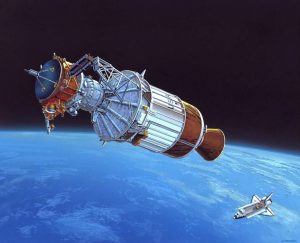- This topic is empty.
-
AuthorPosts
-
15/05/2025 at 11:24 #4809
When it comes to the performance and efficiency of internal combustion engines, the mechanical fuel pump plays a pivotal role. For automotive enthusiasts, mechanics, and engineers alike, understanding the pressure output of these pumps is crucial for diagnosing fuel delivery issues and optimizing engine performance. One of the most common questions that arise in this context is: How much PSI does a mechanical fuel pump have?
The Basics of Mechanical Fuel Pumps
Mechanical fuel pumps are typically found in older vehicles and some small engines. They operate using a diaphragm mechanism that is driven by the engine’s camshaft. This design allows them to draw fuel from the tank and deliver it to the carburetor or fuel injection system. Unlike electric fuel pumps, which can generate higher pressures, mechanical pumps generally operate at lower pressure levels.
Typical PSI Ranges
The pressure output of a mechanical fuel pump can vary significantly based on the specific application and design. However, most mechanical fuel pumps typically operate within a range of 4 to 7 PSI. This range is generally sufficient for carbureted engines, which require lower fuel pressure compared to fuel-injected systems.
1. Carbureted Engines: For vehicles equipped with carburetors, a pressure range of 4 to 6 PSI is usually ideal. This ensures that the fuel is delivered adequately without flooding the carburetor, which can lead to poor engine performance and increased emissions.
2. Fuel-Injected Engines: While most fuel-injected systems utilize electric pumps, some older fuel-injected engines may still use mechanical pumps. In these cases, the pressure requirements can be slightly higher, typically around 5 to 7 PSI. However, it is essential to consult the manufacturer’s specifications for the exact requirements.
Factors Influencing Fuel Pump Pressure
Several factors can influence the pressure output of a mechanical fuel pump:
– Engine Speed: As engine RPM increases, the demand for fuel also rises. A well-functioning mechanical pump should maintain consistent pressure across various engine speeds.
– Fuel Temperature: Warmer fuel can lead to vaporization, which may affect the pump’s ability to maintain pressure. This is particularly relevant in high-temperature environments or during extended idling.
– Fuel Line Restrictions: Any restrictions or blockages in the fuel line can lead to pressure drops. Regular maintenance and inspection of fuel lines are essential to ensure optimal performance.
– Pump Wear and Tear: Over time, mechanical fuel pumps can wear out, leading to decreased pressure output. Symptoms of a failing pump include hard starting, engine stalling, and poor acceleration.
Diagnosing Pressure Issues
To accurately diagnose fuel pressure issues, it is advisable to use a fuel pressure gauge. This tool allows you to measure the pressure at the fuel line, providing insight into whether the pump is functioning within the expected range. If the pressure is below the recommended levels, it may indicate a failing pump or other issues within the fuel delivery system.
Conclusion
Understanding the PSI output of a mechanical fuel pump is essential for anyone involved in automotive maintenance or repair. With typical operating pressures ranging from 4 to 7 PSI, these pumps are designed to meet the specific needs of carbureted and some fuel-injected engines. Regular monitoring and maintenance can help ensure that your mechanical fuel pump operates efficiently, ultimately contributing to the overall performance and longevity of your engine.
-
AuthorPosts
- You must be logged in to reply to this topic.


